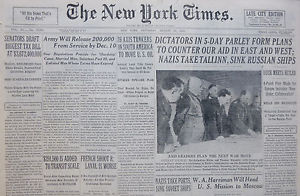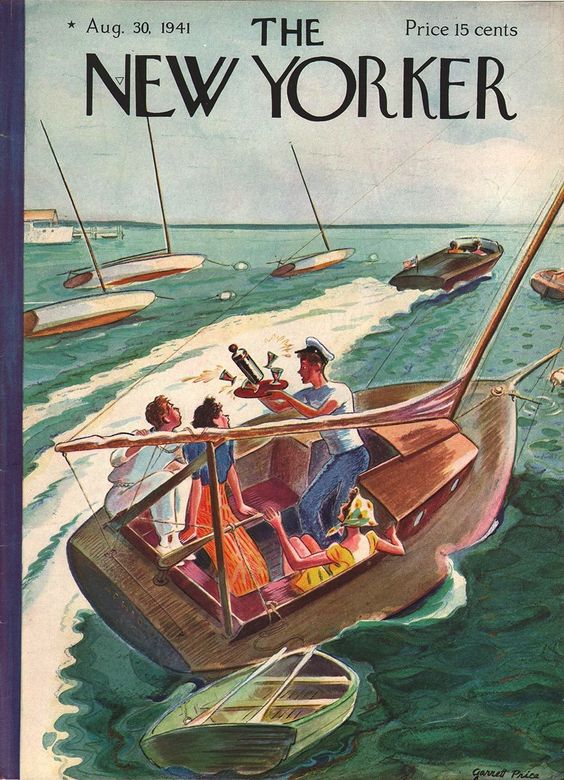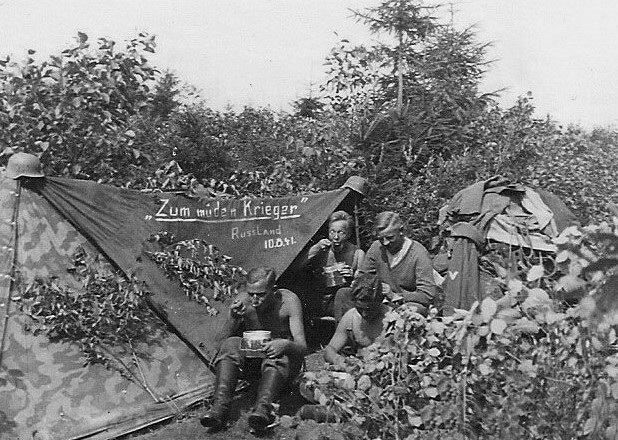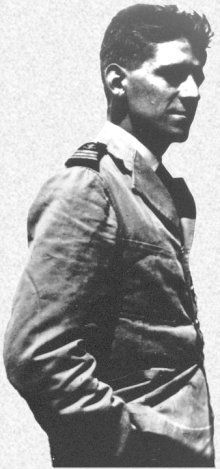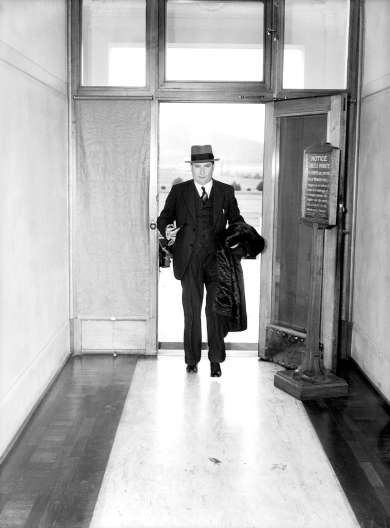Sunday 31 August 1941
 |
| Finnish soldiers at a military parade in Viipuri celebrating its capture, 31 August 1941. They find the city in ruins, with 3807 of 6287 buildings destroyed (SA-Kuva). |
Eastern Front: On 31 August 1941, the true nature of the relationship between the Finns and the Germans is starkly revealed without any possibility of misinterpretation. German General W. Erfurth contacts Finnish Field Marshal Mannerheim on behalf of Field Marshal Keitel, head of OKW, and informs Mannerheim that Keitel will be sending a letter coordinating a joint attack on Leningrad. Mannerheim already has decided not to attack Leningrad, and politely replies that he is not interested. However, Erfurth later delivers the letter anyway.
Mannerheim is not acting alone, as the Finnish Social Democrat government led by President Risto Ryti is dead-set against any advances beyond the old border. Ryti and Mannerheim, after receiving Keitel's letter shortly thereafter, collaborate on a negative reply. There will be no Finnish attack on Leningrad (though this is a sensitive topic to Russians who feel the physical evidence in the city of Finnish artillery shelling indicates otherwise).
This is a decisive moment in World War II. The Finnish Army has been the dominant force in the north, outclassing both its Soviet opponents and its German allies. German troops in the forests and swamps have had mixed success and have little hope of advancing further without Finnish military assistance. Finnish refusal to attack Leningrad from the north means that the Soviets can concentrate all of their defensive forces in the south, effectively doubling their effectiveness.
Finnish and Geman collaboration is far from over. The Finns simply have shown their own limits. From now on, though, their status as "co-belligerents" rather than true German "allies" is unmistakable.
Mannerheim is not acting alone, as the Finnish Social Democrat government led by President Risto Ryti is dead-set against any advances beyond the old border. Ryti and Mannerheim, after receiving Keitel's letter shortly thereafter, collaborate on a negative reply. There will be no Finnish attack on Leningrad (though this is a sensitive topic to Russians who feel the physical evidence in the city of Finnish artillery shelling indicates otherwise).
This is a decisive moment in World War II. The Finnish Army has been the dominant force in the north, outclassing both its Soviet opponents and its German allies. German troops in the forests and swamps have had mixed success and have little hope of advancing further without Finnish military assistance. Finnish refusal to attack Leningrad from the north means that the Soviets can concentrate all of their defensive forces in the south, effectively doubling their effectiveness.
Finnish and Geman collaboration is far from over. The Finns simply have shown their own limits. From now on, though, their status as "co-belligerents" rather than true German "allies" is unmistakable.
 |
| Finnish forces held a victory ceremony in Viipuri/Vyborg Main Square before the statue of Torkel Knutsson, 31 August 1941 (SA-Kuva). |
In the Far North sector, Mannerheim orders that Finnish forces attack to the south but stop their advance once they reach a line well short of Leningrad. This line runs from the mouth of the river Rajajoki to Ohta and actually is slightly beyond the old border - which Mannerheim has requested and received permission from the government to do in order to achieve the best defensible positions (Minister of War Lt. General Walden also supports this). Ryti's government demands in exchange for this slight concession that Germany supplies 25,000 tons of rye in order to support Finland keeping all of its men at the front (this is a continuing theme in Finnish/German relations throughout the war). Mannerheim leaves the exact line in between those two points unsaid in order to give his troops local flexibility on seizing the most advantageous defensive points (hills, rivers, marshes, etc.).
A quick look at the map shows that Mannerheim's line represents a shortened front between the Baltic and Lake Ladoga while avoiding Soviet fortifications on the outskirts of Leningrad (the 22nd Karelian Fortified Region, or KaUR). Mannerheim's specificity on stopping along a specific line avoids incidents encountered previously in other sectors in which some Finnish troops refused to cross the old border. The troops now are reassured that they are not advancing endlessly into the Soviet Union and thus feel more confident in advancing slightly into the USSR. Finnish 12th Division reaches the town of Kivennapa south of Viipuri on the old border today but continues advancing beyond pursuant to Mannerheim's orders.
Soviet troops are in disarray on the Karelian Isthmus. Having lost Viipuri, they stream back toward Leningrad and prepare to make a stand in the Stalin Line anchored by the KaUR. On the other side of Leningrad, the Germans continue to advance but still do not have a tight line around the city.
A quick look at the map shows that Mannerheim's line represents a shortened front between the Baltic and Lake Ladoga while avoiding Soviet fortifications on the outskirts of Leningrad (the 22nd Karelian Fortified Region, or KaUR). Mannerheim's specificity on stopping along a specific line avoids incidents encountered previously in other sectors in which some Finnish troops refused to cross the old border. The troops now are reassured that they are not advancing endlessly into the Soviet Union and thus feel more confident in advancing slightly into the USSR. Finnish 12th Division reaches the town of Kivennapa south of Viipuri on the old border today but continues advancing beyond pursuant to Mannerheim's orders.
Soviet troops are in disarray on the Karelian Isthmus. Having lost Viipuri, they stream back toward Leningrad and prepare to make a stand in the Stalin Line anchored by the KaUR. On the other side of Leningrad, the Germans continue to advance but still do not have a tight line around the city.
 |
| Street scene in Viipuri, 31 August 1941. |
In the Army Group North sector, the final Soviet troops evacuate from Tallinn and the Germans complete their capture of the city. The Soviets counterattack at Mga and retake it. The Germans complete the capture of Novgorod north of Lake Ilmen, providing a secure "block" on the eastern flank of Army Group North. Moscow radio announces in its usual vague wording that "the enemy is at the approaches of Leningrad." The Leningrad government puts up posters throughout the city saying "The Enemy is at the Gates." The city is prepared for a siege, with sandbags in store windows and everyone mobilized to help in the defense.
In the Army Group Center sector, General Guderian's Panzer Group 2 and Second Army continue trying to drive south to Kyiv against fierce resistance from Soviet Bryansk Front. The Soviets are counterattacking and have stopped the Germans for the moment. Marshal Boris Shaposhnikov reports:
In the Army Group South sector, the Wehrmacht opens the offensive toward Rostov by building a pontoon bridge over the Dneipr. LII Corps (General of the Kavalrie von Briesen) captures a bridge at Derievka just south of Kremenchuk.
In the Army Group Center sector, General Guderian's Panzer Group 2 and Second Army continue trying to drive south to Kyiv against fierce resistance from Soviet Bryansk Front. The Soviets are counterattacking and have stopped the Germans for the moment. Marshal Boris Shaposhnikov reports:
The offensive on Roslavl' by the Reserve Front's 43rd Army is developing successfully. However, the enemy is bringing forces up for an attack from the south. Consequently, it is necessary to speed up the preparations for the 50th Army's offensive and to begin it on 1 September or, in the last resort, on 2 September, in order to assist the 43rd Army's attack and prevent the enemy from concentrating forces against it. The 50th Army must continuously and energetically continue reconnaissance with reinforced battalions along the front.The German defenders at Yelnya are under extreme pressure but continue holding their positions. Field Marshal von Bock does not have reinforcements at hand due to the diversion of Panzer Group 2 to Kyiv.
In the Army Group South sector, the Wehrmacht opens the offensive toward Rostov by building a pontoon bridge over the Dneipr. LII Corps (General of the Kavalrie von Briesen) captures a bridge at Derievka just south of Kremenchuk.
 |
| Finnish troops in Viipuri celebrating its capture, 31 August 1941 (SA-Kuva). |
European Air Operations: During the day, RAF Bomber Command sends 30 Blenheim bombers against several targets. Twelve bombers attack the Lille power station, while the RAF sends six bombers against each of several targets: Lannion airfield, St-Omer airfield, and Le Trait Shipyards. The weather is poor, so some of the bombers choose other targets that they can see. In addition, three Flying Fortresses bomb Bremen. All of the bombers then return safely.
After dark, RAF Bomber Command attacks Cologne and Essen despite the poor weather. There are 103 bombers (45 Wellingtons, 39 Hampdens, 7 Halifaxes, 6 Manchesters, and 6 Stirlings) over Cologne, with an additional five Manchesters on searchlight-suppression missions. The RAF loses 3 Hampdens, one Manchester, and one Wellington over the city, and another Wellington shot down over England by a Luftwaffe intruder. Accuracy is very poor, and only 68 bombers actually release bombs over the city. There is one death in the city, suggesting that most of the bombers miss it completely.
The night's secondary target is Essen. The 43 Whitleys and 28 Wellingtons sent there lose only one Whitely and accomplish very little due to the cloud cover. Only a handful of people are killed and ten injured.
In addition, the RAF sends 6 Wellingtons over Boulogne and 12 Hampdens on minelaying at Kiel Bay and the Frisian Islands. There is one Wellington lost.
The Luftwaffe attacks Hull after dark. A bomb hits a shelter and causes many casualties. Approximately 200 homes are destroyed and 38 people are killed.
After dark, RAF Bomber Command attacks Cologne and Essen despite the poor weather. There are 103 bombers (45 Wellingtons, 39 Hampdens, 7 Halifaxes, 6 Manchesters, and 6 Stirlings) over Cologne, with an additional five Manchesters on searchlight-suppression missions. The RAF loses 3 Hampdens, one Manchester, and one Wellington over the city, and another Wellington shot down over England by a Luftwaffe intruder. Accuracy is very poor, and only 68 bombers actually release bombs over the city. There is one death in the city, suggesting that most of the bombers miss it completely.
The night's secondary target is Essen. The 43 Whitleys and 28 Wellingtons sent there lose only one Whitely and accomplish very little due to the cloud cover. Only a handful of people are killed and ten injured.
In addition, the RAF sends 6 Wellingtons over Boulogne and 12 Hampdens on minelaying at Kiel Bay and the Frisian Islands. There is one Wellington lost.
The Luftwaffe attacks Hull after dark. A bomb hits a shelter and causes many casualties. Approximately 200 homes are destroyed and 38 people are killed.
 |
| Marines (Naval Infantry) of the Baltic Fleet, 31 August 1941. |
Battle of the Baltic: The German 5th R-Boat Flotilla lays 32 mines between German minefield Juminda and Finnish minefield Valkjarvi during the night. This was the scene of over 20 Soviet ships hitting mines and sinking recently during the evacuation of Tallinn.
A total of 164 Soviet vessels reach Kronstadt out of roughly 200 that participate in the Tallinn evacuation - the rest are at the bottom of the Baltic. The four convoys carry 28,000 troops and civilian evacuees - many thousands either drowned or were rescued along the way. The convoy escorts now change missions and provide shore bombardment in support of ground troops defending Leningrad.
A total of 164 Soviet vessels reach Kronstadt out of roughly 200 that participate in the Tallinn evacuation - the rest are at the bottom of the Baltic. The four convoys carry 28,000 troops and civilian evacuees - many thousands either drowned or were rescued along the way. The convoy escorts now change missions and provide shore bombardment in support of ground troops defending Leningrad.
 |
| Finnish troops in Viipuri celebrating its capture, 31 August 1941 (SA-Kuva). |
Battle of the Atlantic: This is one of the few days of this stage of World War II when no ships are reported sunk for any reason in the Atlantic.
The ships of Operation Dervish, the first British convoy to the Soviet Union, reach Archangel. It includes six freighters an oiler escorted by the aircraft carrier HMS Victorious, heavy cruisers Devonshire and Suffolk, and several destroyers. Four Soviet destroyers greet the convoy at sea and guide it in.
For the month of August 1941, total Allied shipping losses edge up slightly, from 109,276 tons in July to 125,550 tons in August. Imports to - which now include the Soviet Union for the first time - edge up as well, from 3,765,724 tons to 4,002,450 tons. Allied losses to U-boats are down from 94,209 tons to 80,310 tons, but that is counterbalanced by increased losses to the Luftwaffe (from 9275 tons to 23,862 tons). Losses to mines fall from 8583 tons to 1400 tons, which is the lowest point of the war and also the lowest until August 1942.
The Allies lose 36 ships of 103,452 tons in the Atlantic and 5 ships of 27,247 tons in the Mediterranean. The Axis (primarily Italy) loses 11 ships of 52,538 tons in the Mediterranean, most along the vital convoy route from Naples to Tripoli which the Royal Navy knows all about and where it maintains patrols. RAF bombers based on Malta also are becoming more effective against Axis shipping. The Kriegsmarine loses four U-boats (which includes U-570, which is captured and the crew made prisoners of war) but has a new high of 65 available in the Atlantic.
The ships of Operation Dervish, the first British convoy to the Soviet Union, reach Archangel. It includes six freighters an oiler escorted by the aircraft carrier HMS Victorious, heavy cruisers Devonshire and Suffolk, and several destroyers. Four Soviet destroyers greet the convoy at sea and guide it in.
For the month of August 1941, total Allied shipping losses edge up slightly, from 109,276 tons in July to 125,550 tons in August. Imports to - which now include the Soviet Union for the first time - edge up as well, from 3,765,724 tons to 4,002,450 tons. Allied losses to U-boats are down from 94,209 tons to 80,310 tons, but that is counterbalanced by increased losses to the Luftwaffe (from 9275 tons to 23,862 tons). Losses to mines fall from 8583 tons to 1400 tons, which is the lowest point of the war and also the lowest until August 1942.
The Allies lose 36 ships of 103,452 tons in the Atlantic and 5 ships of 27,247 tons in the Mediterranean. The Axis (primarily Italy) loses 11 ships of 52,538 tons in the Mediterranean, most along the vital convoy route from Naples to Tripoli which the Royal Navy knows all about and where it maintains patrols. RAF bombers based on Malta also are becoming more effective against Axis shipping. The Kriegsmarine loses four U-boats (which includes U-570, which is captured and the crew made prisoners of war) but has a new high of 65 available in the Atlantic.
 |
| Finnish troops at Viipuri celebrating its capture, 31 August 1941 (SA-Kuva). |
Battle of the Mediterranean: The Luftwaffe attacks Alexandria shortly before midnight. There are two deaths of Royal Navy officers and an officer is wounded, along with numerous other casualties. Damage to the port itself and shipping is minimal.
An Italian convoy of three large liners (Neptunia, Oceania, and Victoria) being used as transports, escorted by six destroyers, departs from Tripoli bound for Taranto. Royal Navy submarine HMS Upholder (Lt Cdr Wanklyn) attacks the convoy but misses. Another Italian convoy of five freighters and a mine-ship also departs from Tripoli bound for Naples.
Dutch submarine O.21 spots an Italian submarine in the Tyrrhenian Sea and makes an unsuccessful attack.
Nine Wellington bombers based on Malta attack Tripoli, damaging buildings.
During the month of August, Royal Navy submarines based on Malta sink six ships totaling 50,000 tons, 1 Italian cruiser (Bolzano), and damage 4971-ton freighter Aquitania and perhaps a destroyer.
Battle of the Black Sea: Soviet submarine M-34 spots 4958-ton Italian tanker Tampico off Varna, Bulgaria. It attacks but misses.
The Germans sink several Soviet river warships on the Dneipr:
An Italian convoy of three large liners (Neptunia, Oceania, and Victoria) being used as transports, escorted by six destroyers, departs from Tripoli bound for Taranto. Royal Navy submarine HMS Upholder (Lt Cdr Wanklyn) attacks the convoy but misses. Another Italian convoy of five freighters and a mine-ship also departs from Tripoli bound for Naples.
Dutch submarine O.21 spots an Italian submarine in the Tyrrhenian Sea and makes an unsuccessful attack.
Nine Wellington bombers based on Malta attack Tripoli, damaging buildings.
During the month of August, Royal Navy submarines based on Malta sink six ships totaling 50,000 tons, 1 Italian cruiser (Bolzano), and damage 4971-ton freighter Aquitania and perhaps a destroyer.
Battle of the Black Sea: Soviet submarine M-34 spots 4958-ton Italian tanker Tampico off Varna, Bulgaria. It attacks but misses.
The Germans sink several Soviet river warships on the Dneipr:
- Several Soviet ships are lost in the Dneipr River today:
- Zhitomar-class river monitor Bobruysk (hit by artillery and scuttled)
- Auxiliary river guard ship SK-4 Tekrik
- Trudovoy-class river gunboat Trudovoy (runs aground, is towed off, then hit by panzer tank fire and sunk)
 |
| German crew sighting the 20mm cannon on a Bf 109F fighter of JG 54 "Greenhearts" (Grünherz) fighter wing, near Leningrad, Russia, August 1941 (Reiners, Federal Archive, Bild 101I-390-1220-19), |
Partisans: At 07:00, the Jadar Chetnik unit attacks Loznica. The Chetniks take many 18 killed and 93 casualties in total, including leader Lieutenant Colonel Veselin Misita, who is killed. Many Germans surrender (93), and the Chetniks take Loznica. The victors treat the captured Wehrmacht troops humanely, which is not always the case in this region. Those Germans who can get away flee to Banja Koviljača.
While the Chetniks are attacking Loznica, the 25-strong Cer Chetnik Detachment under the command of a regular artillery officer, Captain First Class Dragoslav Račić, attacks the village of Bogatić. This attack does not go as well as the attack on Loznica, as the Germans have reinforcements nearby. The Račić group continues the attack through the day and holds its position through the night.
The subtext behind these two attacks reveals much about the state of the partisan movement in Yugoslavia. The joint attacks take place despite the prohibition by Chetnik leader Draža Mihailović against attacks until there is a popular uprising. Thus, these attacks represent a splintering of the opposition forces in Yugoslavia.
Special Forces: Canadian forces remain in possession of Spitzbergen. Norwegian radio operators on the island continue feeding the Germans on the mainland false information about bad weather, keeping the Luftwaffe at bay. The native Norwegians on the island prepare to be evacuated to England.
While the Chetniks are attacking Loznica, the 25-strong Cer Chetnik Detachment under the command of a regular artillery officer, Captain First Class Dragoslav Račić, attacks the village of Bogatić. This attack does not go as well as the attack on Loznica, as the Germans have reinforcements nearby. The Račić group continues the attack through the day and holds its position through the night.
The subtext behind these two attacks reveals much about the state of the partisan movement in Yugoslavia. The joint attacks take place despite the prohibition by Chetnik leader Draža Mihailović against attacks until there is a popular uprising. Thus, these attacks represent a splintering of the opposition forces in Yugoslavia.
Special Forces: Canadian forces remain in possession of Spitzbergen. Norwegian radio operators on the island continue feeding the Germans on the mainland false information about bad weather, keeping the Luftwaffe at bay. The native Norwegians on the island prepare to be evacuated to England.
 |
| Soviet and British troops meeting in Qazvin, Iran, on or about 31 August 1941. |
Iran Invasion: With a ceasefire in effect, fighting is negligible today. The British eye occupying the "open city" of Kermanshah, while the Soviets also continue expanding their presence within their agreed northern zone of influence. Soviet and British troops meet in Qazvin (Kazvin) at Avej Pass. This basically halts the Soviet advance as both sides watch the diplomats try to arrange a final settlement.
The outcome of the campaign is a foregone conclusion, but the Allies want to convert Iran into an ally, not just subdue it. Iran represents a possible supply line (the "Persian Corridor") from the Western Allies to the USSR, and the less opposition within the country to that idea, the better. The stumbling block is Reza Shah Pahlavi, who wishes to protect German, Italian, Hungarian, and Romanian nationals and give them an opportunity to escape. The Allies, of course, want to intern them. The Iranian government, led by new Prime Minister Mohammad Ali Foroughi, doesn't care about protecting Axis nationals and simply wants the war over, so it is an unstable situation in which either someone gives in - or goes.
The outcome of the campaign is a foregone conclusion, but the Allies want to convert Iran into an ally, not just subdue it. Iran represents a possible supply line (the "Persian Corridor") from the Western Allies to the USSR, and the less opposition within the country to that idea, the better. The stumbling block is Reza Shah Pahlavi, who wishes to protect German, Italian, Hungarian, and Romanian nationals and give them an opportunity to escape. The Allies, of course, want to intern them. The Iranian government, led by new Prime Minister Mohammad Ali Foroughi, doesn't care about protecting Axis nationals and simply wants the war over, so it is an unstable situation in which either someone gives in - or goes.
 |
| A Finnish anti-tank gun crew poses next to a captured Soviet gun, August 1941. |
Cuban/Italian Relations: Cuban authorities seize 5441-ton Italian freighter Recca at Havana and rename it Libertad.
British/Australian Relations: Prime Minister Winston Churchill informs new Australian PM Arthur Fadden that he intends to create a new Far East fleet built around capital ships. These ships would be based in Singapore.
British Military: British women serve in a combat role for the first time when a mixed-gender anti-aircraft battery is formed in Richmond Park, London. There are 200 women and 200 men.
Japanese Military: The Imperial Japanese Navy completes the conversion of Kasuga Maru into an escort carrier named Taiyo at Sasebo, Japan.
Holocaust: At Vilnia, the German SS takes 3700 Jews (some sources say 1600), including 2019 women and 817 children, out to Ponar and execute them. This ostensibly is in retaliation for a partisan ambush of a German patrol.
Swiss Homefront: Rationing of cheese is introduced.
American Homefront: Radio show "The Great Gildersleeve" debuts on the NBC Red Network. It airs every Sunday at 18:30 EST. Harold Peary plays Throckmorton Philharmonic Gildersleeve, a character that originated on "Fibber McGee and Molly. This is an early example of a spinoff program. Peary also stars in the film adaptation of the sitcom.
August 1941
August 1, 1941: More Executions on Crete
August 2, 1941: Uman Encirclement Closes
August 3, 1941: Bishop von Galen Denounces Euthanasia
August 4, 1941: Hitler at the Front
August 5, 1941: Soviets Surrender at Smolensk
August 6, 1941: U-Boats in the Arctic
August 7, 1941: Soviets Bomb Berlin
August 8, 1941: Uman Pocket Captured
August 9, 1941: Atlantic Conference at Placentia Bay
August 10, 1941: Soviet Bombers Mauled Over Berlin
August 11, 1941: Rita Hayworth in Life
August 12, 1941: Atlantic Charter Announced
August 13, 1941: The Soybean Car
August 14, 1941: The Anders Army Formed
August 15, 1941: Himmler at Minsk
August 16, 1941: Stalin's Order No. 270
August 17, 1941: Germans in Novgorod
August 18, 1941: Lili Marleen
August 19, 1941: Convoy OG-71 Destruction
August 20, 1941: Siege of Leningrad Begins
August 21, 1941: Stalin Enraged
August 22, 1941: Germans Take Cherkassy
August 23, 1941: Go to Kiev
August 24, 1941: Finns Surround Viipuri
August 25, 1941: Iran Invaded
August 26, 1941: The Bridge Over the Desna
August 27, 1941: Soviets Evacuate Tallinn
August 28, 1941: Evacuating Soviets Savaged
August 29, 1941: Finns take Viipuri
August 30, 1941: Operation Acid
August 31, 1941: Mannerheim Says No
September 1941
September 1, 1941: Two Years In
September 2, 1941: Germans Pushed Back at Yelnya
September 3, 1941: FDR Refuses to Meet with Japanese
September 4, 1941: Hitler Furious at Guderian
September 5, 1941: Germans Evacuate Yelnya
September 6, 1941: Japan Prepares for War
September 7, 1941: Hitler Orders Drive on Moscow
September 8, 1941: Leningrad Cut Off
September 9, 1941: Germans Attack Leningrad
September 10, 1941: Guderian Busts Loose
September 11, 1941: Convoy SC-42 Destruction
September 12, 1941: Starve Leningrad!
September 13, 1941: Zhukov at Leningrad
September 14, 1941: Germany's Growing Casualties
September 15, 1941: Sorge Warns Stalin Again
September 16, 1941: Soviets Encircled at Kiev
September 17, 1941: Iran Conquest Completed
September 18, 1941: Focke-Wulf Fw 190 in Action
September 19, 1941: Germans Take Kiev
September 20, 1941: Death at Kiev
September 21, 1941: Raging Soviet Paranoia
September 22, 1941: Defense of Nickel Mines
September 23, 1941: Air Attacks on Leningrad
September 24, 1941: Japanese Spying Intensifies
September 25, 1941: Manstein at the Crimea
September 26, 1941: Kiev Pocket Eliminated
September 27, 1941: Massacre at Eišiškės
September 28, 1941: Ted Williams Hits .400
September 29, 1941: Babi Yar Massacre
September 30, 1941: Operation Typhoon Begins
2022
British/Australian Relations: Prime Minister Winston Churchill informs new Australian PM Arthur Fadden that he intends to create a new Far East fleet built around capital ships. These ships would be based in Singapore.
British Military: British women serve in a combat role for the first time when a mixed-gender anti-aircraft battery is formed in Richmond Park, London. There are 200 women and 200 men.
Japanese Military: The Imperial Japanese Navy completes the conversion of Kasuga Maru into an escort carrier named Taiyo at Sasebo, Japan.
Holocaust: At Vilnia, the German SS takes 3700 Jews (some sources say 1600), including 2019 women and 817 children, out to Ponar and execute them. This ostensibly is in retaliation for a partisan ambush of a German patrol.
Swiss Homefront: Rationing of cheese is introduced.
American Homefront: Radio show "The Great Gildersleeve" debuts on the NBC Red Network. It airs every Sunday at 18:30 EST. Harold Peary plays Throckmorton Philharmonic Gildersleeve, a character that originated on "Fibber McGee and Molly. This is an early example of a spinoff program. Peary also stars in the film adaptation of the sitcom.
 |
| Harold Peary as Gildersleeve. |
August 1941
August 1, 1941: More Executions on Crete
August 2, 1941: Uman Encirclement Closes
August 3, 1941: Bishop von Galen Denounces Euthanasia
August 4, 1941: Hitler at the Front
August 5, 1941: Soviets Surrender at Smolensk
August 6, 1941: U-Boats in the Arctic
August 7, 1941: Soviets Bomb Berlin
August 8, 1941: Uman Pocket Captured
August 9, 1941: Atlantic Conference at Placentia Bay
August 10, 1941: Soviet Bombers Mauled Over Berlin
August 11, 1941: Rita Hayworth in Life
August 12, 1941: Atlantic Charter Announced
August 13, 1941: The Soybean Car
August 14, 1941: The Anders Army Formed
August 15, 1941: Himmler at Minsk
August 16, 1941: Stalin's Order No. 270
August 17, 1941: Germans in Novgorod
August 18, 1941: Lili Marleen
August 19, 1941: Convoy OG-71 Destruction
August 20, 1941: Siege of Leningrad Begins
August 21, 1941: Stalin Enraged
August 22, 1941: Germans Take Cherkassy
August 23, 1941: Go to Kiev
August 24, 1941: Finns Surround Viipuri
August 25, 1941: Iran Invaded
August 26, 1941: The Bridge Over the Desna
August 27, 1941: Soviets Evacuate Tallinn
August 28, 1941: Evacuating Soviets Savaged
August 29, 1941: Finns take Viipuri
August 30, 1941: Operation Acid
August 31, 1941: Mannerheim Says No
September 1941
September 1, 1941: Two Years In
September 2, 1941: Germans Pushed Back at Yelnya
September 3, 1941: FDR Refuses to Meet with Japanese
September 4, 1941: Hitler Furious at Guderian
September 5, 1941: Germans Evacuate Yelnya
September 6, 1941: Japan Prepares for War
September 7, 1941: Hitler Orders Drive on Moscow
September 8, 1941: Leningrad Cut Off
September 9, 1941: Germans Attack Leningrad
September 10, 1941: Guderian Busts Loose
September 11, 1941: Convoy SC-42 Destruction
September 12, 1941: Starve Leningrad!
September 13, 1941: Zhukov at Leningrad
September 14, 1941: Germany's Growing Casualties
September 15, 1941: Sorge Warns Stalin Again
September 16, 1941: Soviets Encircled at Kiev
September 17, 1941: Iran Conquest Completed
September 18, 1941: Focke-Wulf Fw 190 in Action
September 19, 1941: Germans Take Kiev
September 20, 1941: Death at Kiev
September 21, 1941: Raging Soviet Paranoia
September 22, 1941: Defense of Nickel Mines
September 23, 1941: Air Attacks on Leningrad
September 24, 1941: Japanese Spying Intensifies
September 25, 1941: Manstein at the Crimea
September 26, 1941: Kiev Pocket Eliminated
September 27, 1941: Massacre at Eišiškės
September 28, 1941: Ted Williams Hits .400
September 29, 1941: Babi Yar Massacre
September 30, 1941: Operation Typhoon Begins
2022







